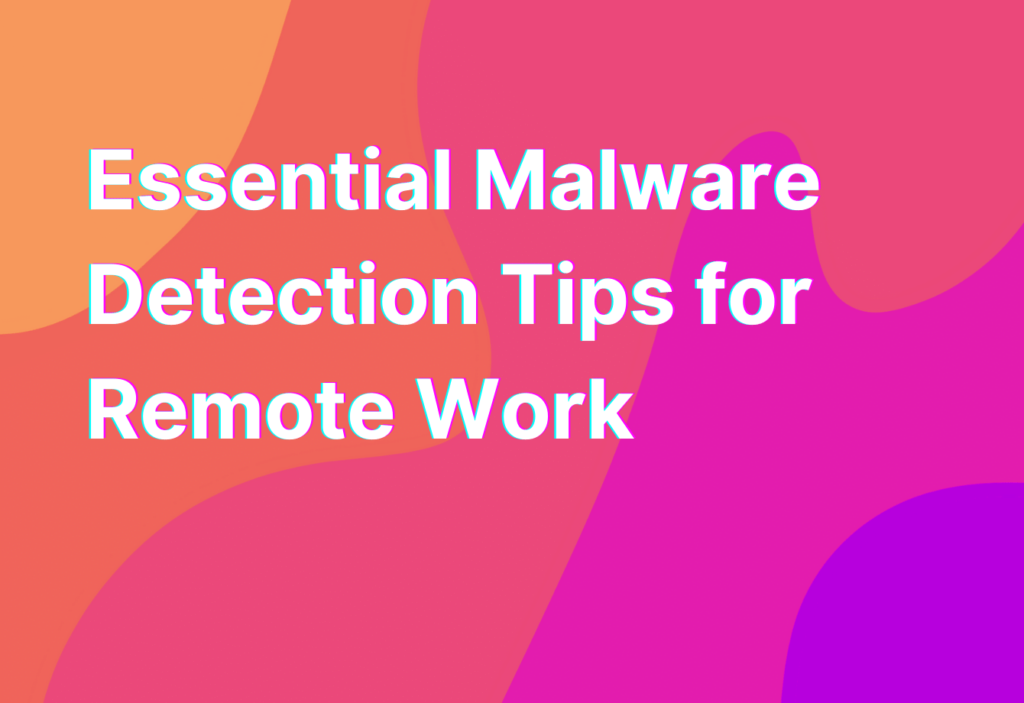Essential Malware Detection Tips for Remote Work
Hey there, remote workers! Ashley here, your friendly remote work advocate with some essential tips on malware detection. As we all know, working remotely comes with its own set of challenges, and one of the biggest challenges is ensuring the security of our devices and data. Malware, short for malicious software, can wreak havoc on our systems and compromise our sensitive information. But fear not! With the right knowledge and tools, we can protect ourselves from these digital pests. So, let’s dive in and explore some essential malware detection tips for remote work.
1. Keep Your Software Up to Date
One of the easiest ways for malware to infiltrate your system is through outdated software. Hackers are constantly finding new vulnerabilities, and software developers are just as constantly patching those vulnerabilities. By keeping your software up to date, you ensure that you have the latest security patches and bug fixes, making it much harder for malware to find its way in.
Pro tip: Enable automatic updates whenever possible. This way, you won’t have to worry about manually updating your software every time a new version is released. Just sit back, relax, and let your computer do the work for you.
2. Use a Reliable Antivirus Software
An antivirus software is like a superhero that protects your computer from malware attacks. It scans your system for any suspicious files or activities and removes or quarantines them before they can cause any harm. There are many great antivirus software options out there, both free and paid. Do your research and choose one that suits your needs and budget.
Pro tip: Don’t forget to regularly update your antivirus software as well. New malware threats emerge every day, and antivirus software companies release updates to stay one step ahead of the bad guys.
3. Be Wary of Suspicious Emails and Links
Phishing emails are a common method used by hackers to trick unsuspecting users into clicking on malicious links or downloading infected attachments. These emails often appear to be from legitimate sources, such as your bank or a well-known company. However, there are usually telltale signs that can help you identify them. Look out for spelling mistakes, grammatical errors, and generic greetings like “Dear Customer” instead of your name.
Pro tip: Hover over links before clicking on them to see the actual URL. If it looks suspicious or doesn’t match the text of the link, don’t click on it. Better safe than sorry!
4. Use Strong and Unique Passwords
We’ve all heard it before, but it’s worth repeating: use strong and unique passwords for all your accounts. A strong password should be at least 12 characters long and include a mix of uppercase and lowercase letters, numbers, and special characters. Avoid using common words or personal information that can be easily guessed.
Pro tip: Consider using a password manager to generate and store your passwords securely. This way, you only need to remember one master password, and the password manager takes care of the rest.
5. Educate Yourself and Your Team
Knowledge is power, especially when it comes to cybersecurity. Take the time to educate yourself and your remote team about the latest malware threats and best practices for staying safe online. Regularly share tips, resources, and updates to ensure everyone is on the same page.
Pro tip: Check out this Network security policy for more in-depth information on safeguarding remote work. It covers everything from secure network connections to data encryption and employee training.
Wrapping Up
And there you have it, my fellow remote workers! By following these essential malware detection tips, you can significantly reduce the risk of falling victim to malware attacks. Remember to keep your software up to date, use reliable antivirus software, be wary of suspicious emails and links, use strong and unique passwords, and educate yourself and your team. Stay safe out there!


